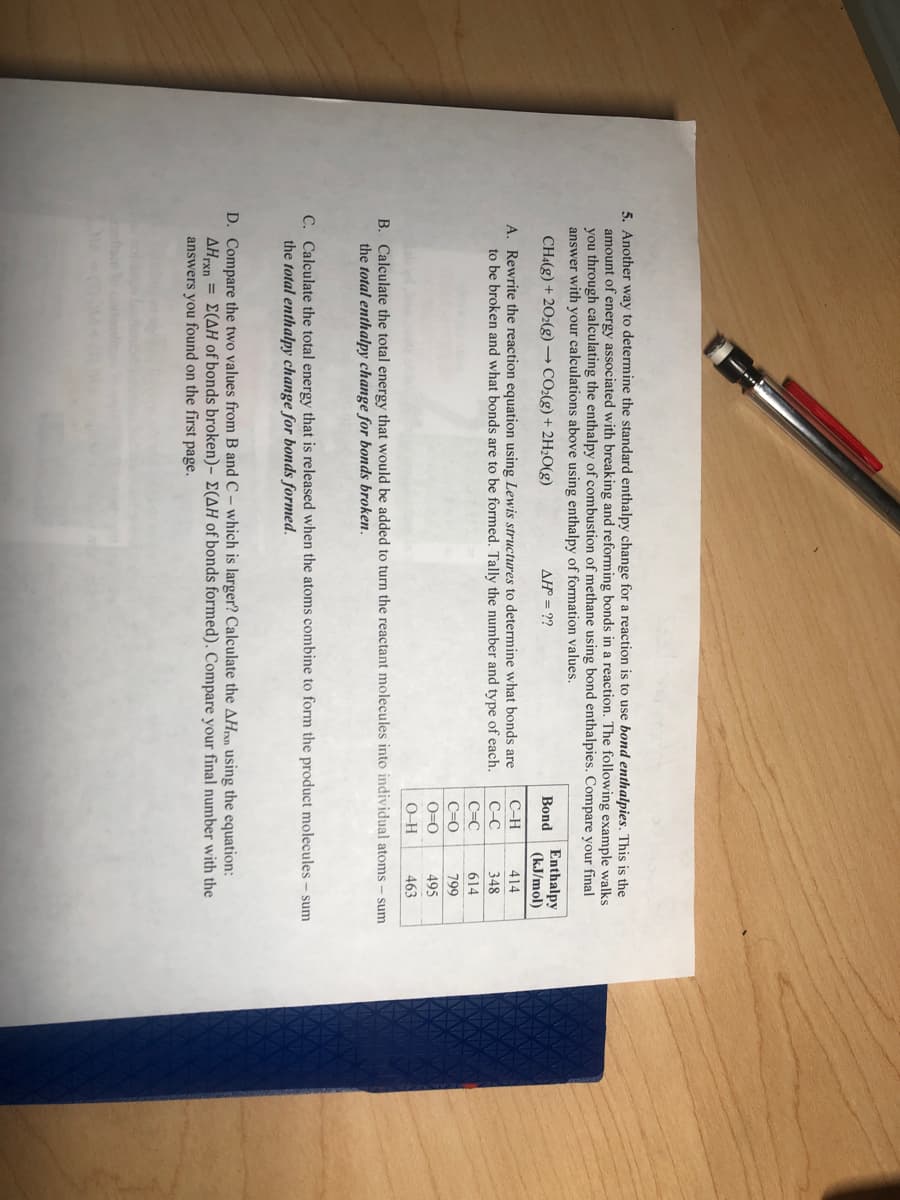5. Another way to determine the standard enthalpy change for a reaction is to use bond enthalpies. This is the amount of energy associated with breaking and reforming bonds in a reaction. The following example walks you through calculating the enthalpy of combustion of methane using bond enthalpies. Compare your final answer with your calculations above using enthalpy of formation values. Bond Enthalpy (kJ/mol) CH:(g) + 202(g)→ CO2(g) + 2H2O(g) AH = ?? A. Rewrite the reaction equation using Lewis structures to determine what bonds are to be broken and what bonds are to be formed. Tally the number and type of each. C-H 414 C-C 348 C=C 614 C=O 799 O=0 495 O-H 463 B. Calculate the total energy that would be added to turn the reactant molecules into individual atoms - sum the total enthalpy change for bonds broken. C. Calculate the total energy that is released when the atoms combine to form the product molecules – sum the total enthalpy change for bonds formed. D. Compare the two values from B and C- which is larger? Calculate the AHpn using the equation: AHrxn = E(AH of bonds broken)- E(AH of bonds formed). Compare your final number with the answers you found on the first page.
Thermochemistry
Thermochemistry can be considered as a branch of thermodynamics that deals with the connections between warmth, work, and various types of energy, formed because of different synthetic and actual cycles. Thermochemistry describes the energy changes that occur as a result of reactions or chemical changes in a substance.
Exergonic Reaction
The term exergonic is derived from the Greek word in which ‘ergon’ means work and exergonic means ‘work outside’. Exergonic reactions releases work energy. Exergonic reactions are different from exothermic reactions, the one that releases only heat energy during the course of the reaction. So, exothermic reaction is one type of exergonic reaction. Exergonic reaction releases work energy in different forms like heat, light or sound. For example, a glow stick releases light making that an exergonic reaction and not an exothermic reaction since no heat is released. Even endothermic reactions at very high temperature are exergonic.

Trending now
This is a popular solution!
Step by step
Solved in 2 steps with 1 images









